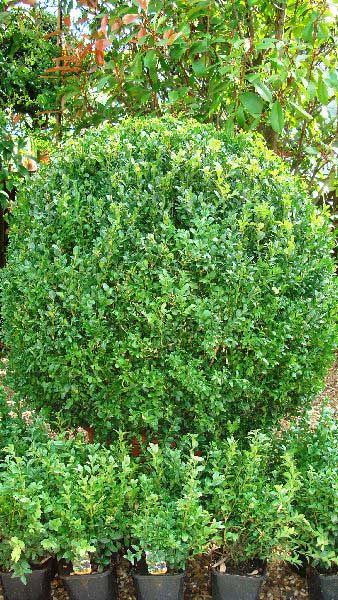This article showcases our top picks for the
Best Plants For Topiary. We reached out to industry leaders and experts who have contributed the suggestions within this article (they have been credited for their contributions below).
We are keen to hear your feedback on all of our content and our comment section is a moderated space to express your thoughts and feelings related (or not) to this article
This list is in no particular order.
This product was recommended by Daniel Foley from Daniel Foley SEO
Topiary is only one application for Buxus. Because these broadleaf evergreen shrubs make it so simple to produce clean, uniform lines, boxwoods have long been utilized in formal landscape designs. Small topiaries are the optimum place for dwarf B. (3 feet × 3 feet, zones 6 to 8, full sun to partial shade).
This product was recommended by Nely Mihaylova from Scooter Guide
Since favorable characteristics for the former are also desirable for the latter, several of the best topiary plants are also among the best hedge plants. One illustration is the broad-leaf shrub privet (Ligustrum). L. Vulgare has a spread of 4 to 8 feet and stands 4 to 15 feet tall. Although not evergreen, this European native is hardy (zones 5 to 8).
This product was recommended by Paul Somerville from Electric Scooter Guide
You can grow lavender herbs as a miniature topiary (zones 5 to 8, full sun, 2 to 3 feet tall, spread varies by cultivar). Those wanting a pleasant scent particularly enjoy this herb. Use the cuttings from your topiary’s trimmings to make potpourri.
This product was recommended by Jay Soni from Yorkshire Fabric Shop
Another herb that is a traditional topiary plant is Rosmarinus officinalis (zones 8 to 10). It is a relative of plants like Spotted dead-nettle because it belongs to the Lamiaceae family. In warm regions, like its native Mediterranean region, the species plant can reach heights of 2 to 6 feet and widths of 2 to 4 feet. If you garden in the North, give this gourmet favorite ample sun and bring it indoors for the winter.
This product was recommended by Bobby Peel from Best Golf Accessories
Japanese maples are deciduous trees that originate in Japan. They are known for their glossy green leaves and distinctive white bark. They are commonly used as street trees in urban settings due to their durability and long lifespan.
This product was recommended by Jen Stark from Happy DIY Home
Topiaries are plants that are cared for, trimmed, or fashioned into attractive forms to enhance your outdoor living space. The Japanese Holly plant, a sun-loving shrub, is one of the most popular topiary plants. This evergreen holly has dark green, beautifully textured leaves, white blooms, and black or purple fruit. They are low-maintenance and will add beauty to your garden.
This product was recommended by Bobby Peel from Best Golf Accessories
Fuchsias are a group of flowering plants that are native to South Africa and southern Australia. They are well suited to both sun and shade environments. They are low-maintenance plants that bloom year round.
This product was recommended by Susan Deguara from Hi Quality Turf
EASY TO MAINTAIN – Buxus balls are a popular choice for topiary as they require very little maintenance. Trim back the tips to maintain shape and size. DENSE, EVERGREEN STRUCTURE – The dense evergreen structure of box plants make them ideal for creating geometric shapes in your garden. It is possible to create an almost impenetrable fence by planting multiple sizes of the same plant together. VARIETY OF SIZES – There are many different sizes available from our range of box plants, so you can choose one that suits your space and style perfectly!
This product was recommended by Anwar Kaur from Hindu Rope
Blue Point Juniper is a coniferous evergreen shrub that is native to Asia. It is a dense, upright plant that can grow up to 6 feet tall and wide. Like most junipers, they are very hardy plants and will grow well in USDA zones 4-9 without much care!
This product was recommended by Chris Kowalski from Autopadre
Why? Most of us don’t have the kind of gardens, or the financial means to create the sort of mind blowing topiaries that fill the annals of YouTube. But that doesn’t mean that you can practice the art and have your own, you just need to think smaller, which is where the Bonsai tree comes in. It’s the perfect introduction to topiary, and the trees can be grown, shaped, and trimmed on your work desk. It’s a little bit of zen for those of us still stuck in the rat race.
This post contains affiliate links. Affiliate disclosure: As an Amazon Associate, we may earn commissions from qualifying purchases from Amazon.com and other Amazon websites.
Post Views: 614











